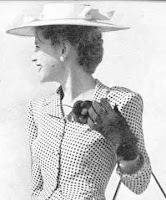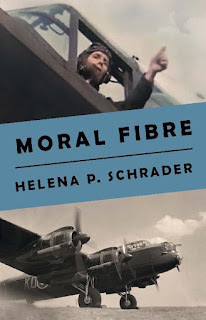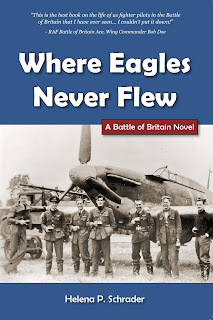Helena P. Schrader's Blog, page 16
October 18, 2022
Living with Ghosts
While the setting of my novels may be historical and the plot shaped by historical events, the books are not about history -- they are always about people. Several of my books have been "biographical" in that they tell the story of historical figures. Others are about characters that have not found their way into the history books. The latter are usually referred to as "fictional" but I hesitate to use the term because this suggests that they have been invented. I'm not so sure about that.
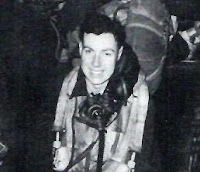
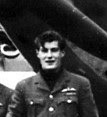
In my experience, my principle characters (not necessarily the entire cast of supporting, secondary and tertiary characters) are complex human beings with their own will. They do not take orders or directions from me. They tell me what they want me to know about themselves, they take control of the scenes in which they appear, and they vehemently protest or simply "go on strike" why I attempt to make them do things they do not approve of, agree to, or consider correct.
When working on a book, and sometimes long afterwards, my characters are with me. No, they do not appear as transparent forms, glowing lights or eerie voices in the night. But they are as present as memories of people we have known well but are no longer with us. They are as "real" as absent friends. When I focus my thoughts upon them (which I do when I prepare to write or during the process of writing), they are so close that they can alter my mood and displace the present. They can disrupt my life as surely as a physical contact, letter or call.
I often worry that I have not done them justice with my writing and wonder if they would not have been wiser to chose a different author. After all, there are many authors who have been more successful than I have. Yet I suppose that choosing an author may be like choosing a friend or partner; much depends on trust and, well, "chemistry." Alternatively, not all successful authors may be as receptive to the voices of others. Maybe one day I will find out why my characters chose me to tell their stories. For now, I am simply grateful and indebted to all my characters for enriching my life with their presence.
they took the war to Hitler.
Their chances of survival were less than fifty percent.
Their average age was 21.
This is the story of just one bomber pilot, his crew and the woman he loved.
It is intended as a tribute to them all.
or Barnes and Noble.
 Disfiguring injuries, class prejudice and PTSD are the focus of three heart-wrenching tales set in WWII by award-winning novelist Helena P. Schrader. Find out more at: https://crossseaspress.com/grounded-eagles
Disfiguring injuries, class prejudice and PTSD are the focus of three heart-wrenching tales set in WWII by award-winning novelist Helena P. Schrader. Find out more at: https://crossseaspress.com/grounded-eagles
"Where Eagles Never Flew" was the the winner of a Hemingway Award for 20th Century Wartime Fiction and a Maincrest Media Award for Military Fiction. Find out more at: https://crossseaspress.com/where-eagles-never-flew
For more information about all my books visit: https://www.helenapschrader.com
October 11, 2022
The Art of Ressurrecting the Dead in Biographical Fiction
Biographical fiction is the art of bringing historical figures back to life. It turns a name in the history books into a person so vivid, complex, and yet comprehensible that history itself becomes more understandable. Good biographical fiction provides insight into the psychology of real historical characters and so helps explain the historical events these men and women helped shape by explaining the motives and character traits that drove them to play their role in history.*
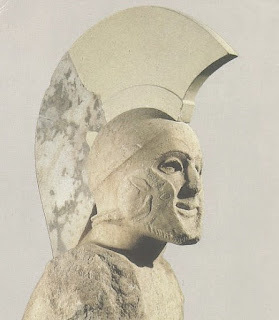
Writing biographical fiction is not easy and it has some unique challenges. As with writing history of any kind, there are always gaps in the historical record and events so controversial or complex that they produce multiple, conflicting accounts. When writing biography, however, there is the added challenge of trying to understand motives for recorded actions and the emotions of the individuals involved ― unless, of course, the subject kept diaries or wrote letters and memoirs describing emotions. In that case, however, the biographer is confronted with the equally challenging issue of how honest or self-serving such documents are!
Biographers like historians, whether working in fiction or non-fiction, must fill in gaps, select between competing accounts of events, and speculate about motives and emotions. Non-fictional biographers do this openly by discussing the different possible interpretations and explaining the reasoning behind their analysis of the character’s actions and motives. Novelists do this by turning their analysis of events into a novel and their interpretation of the personalities into characters.
For the biographical novelist, the historical record is therefore the skeleton ― or plot ― of the book. History, not the novelist, defines the beginning and the end of the principal character, and indeed all the essential historical events in between. But most readers do not want to read about skeletons, certainly not inert ones. They want characters with flesh and blood – with faces, emotions, dreams, and fears. The goal of a biographical novelist is to add contours, colours, animation and above all personality to that historical skeleton.
The novelist’s toolbox for fleshing out a historical skeleton includes research into the “skeleton’s” family background, social status, and profession (and that of the “skeleton’s” ancestors, spouse and partners as well). It includes investigating the customs and culture of the society in which the “skeleton” lived, the legal system to which he or she was subject, the technology and fashions of the age and more. In addition, the biographer (whether for fiction or non-fiction) must also investigate the biographies of known figures who influenced the subject: e.g. their parents, siblings, spouses, colleagues, superiors and subordinates, partners, opponents and rivals.
Only after the biographer has developed an understanding of the environment in which the subject lived and the relationships the historical figure had with his contemporaries is it possible to start constructing a plausible character. Based on this research, the novelist evolves an understanding of why the subject acted in one way or another. The novelist is able to hypothesize the emotions the subject likely felt in certain situations, and to understand the fears, inhibitions, ambitions, and obsessions that might have driven, inspired, warped, and hindered the protagonist. An excellent example of this is Sharon Kay Penman’s biographical novel of Richard III, The Sunne in Splendour. She effectively explains King Richard III by showing how his childhood relationships with his brothers and his Neville cousins made him the man he became.
So far, so good, but a good novelist, in contrast to a non-fiction biographer, also wants to address readers at a literary level. A good novel is not just accurate history about engaging characters, it should also have some compelling themes that will keep the reader thinking about the book long after the reading is over. In biographical fiction, however, the historical skeleton limits a novelist’s freedom of action. It is not possible to give a biographical novel about Anne Boleyn a happy ending!
So this is where it gets tricky ― and bit controversial: a biographical novelist striving to produce a work of art may feel the need to deviate – carefully, selectively, and strategically – from the historical record. This is not about giving a character two heads, or only one hand: it is about changing very subtly some of the “flesh and blood.”
Let me give an example from the world of painting. The surviving contemporary paintings of Isabella I of Castile painted by unknown artists who may have met her are not terribly flattering or inspiring.
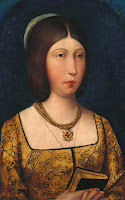
However, there are many portraits of Isabella by subsequent artists who had certainly never laid eyes on her yet are far more evocative and appealing. These later works may not as accurately depict Isabella’s physical features, yet they may capture her spirit in that they make the viewer see aspects of Isabella’s known personality – her piety combined with her iron will, and so on.
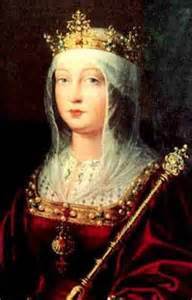
This explains how different works of biographical fiction about the same subject can be very different ― yet equally good. Is Schiller’s or Shaw’s Joan of Arc better? I cannot say offhand which one historians would choose as more accurate, but I do know that both – regardless of which is more accurate – are great works of biographical fiction.
Creating a work of art requires clarity of purpose, consistency of style, and a proper use of light and dark. It requires not only extrapolating and interpreting, but some outright falsification. In a novel, it almost always requires the creation some fictional characters – servants or friends, lovers or rivals – that serve as foils for highlighting character traits, explain later (known) behavior, or provide contrast in order to give the central character deeper contours.
However, from my experience as a writer of non-fictional biography (Codename Valkyrie: General Olbricht and the Plot Against Hitler) and biographical fiction (the Leonidas of Sparta trilogy and the Balian d’Ibelin trilogy), the greatest challenge for the biographical novelist is paring away or condensing some of the known facts or strategically making changes to the historical record in order to produce a clearer and more compelling central character or more comprehensible story.
When resurrecting the dead, historical novelists seek to raise the spirit, not the body. The spirit, not each pound of flesh or each wrinkle on the face, is what we wish our readers and future generations to understand and honor. And spirits are always ethereal, elusive – and not quite real.
* This essay first appeared in the History Press. Copyright Helena P. Schrader
they took the war to Hitler.
Their chances of survival were less than fifty percent.
Their average age was 21.
This is the story of just one bomber pilot, his crew and the woman he loved.
It is intended as a tribute to them all.
or Barnes and Noble.
 Disfiguring injuries, class prejudice and PTSD are the focus of three heart-wrenching tales set in WWII by award-winning novelist Helena P. Schrader. Find out more at: https://crossseaspress.com/grounded-eagles
Disfiguring injuries, class prejudice and PTSD are the focus of three heart-wrenching tales set in WWII by award-winning novelist Helena P. Schrader. Find out more at: https://crossseaspress.com/grounded-eagles
"Where Eagles Never Flew" was the the winner of a Hemingway Award for 20th Century Wartime Fiction and a Maincrest Media Award for Military Fiction. Find out more at: https://crossseaspress.com/where-eagles-never-flew
For more information about all my books visit: https://www.helenapschrader.com
September 27, 2022
GREEK RELEASE OF "LEONIDAS OF SPARTA: A HEROIC KING"
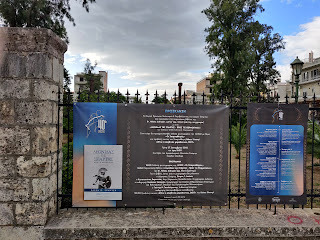
On 27 September, the Greek edition of Leonidas of Sparta: A Heroic King was launched at an event in Sparta. The event was hosted by Mayor Doukas and attended by scholars, representatives of the publishing industry, and the general public.
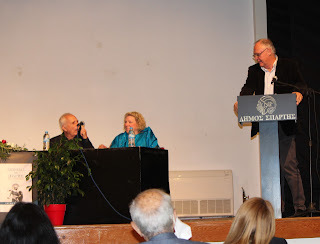
The Greek book, Λεωνιδας της Σπαρτης - Προς τις θερμοπυλες released by Alpha Publishers Athens, was praised for its accuracy and its continued relevancy by guest speakers from the University of the Peloponnese and the City of Sparta.
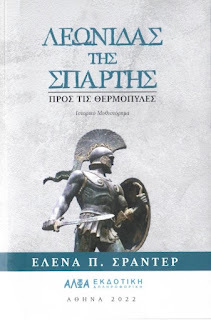
Λεωνιδας της Σπαρτης - Προς τις θερμοπυλες is available at all bookstores in Sparta and will also soon be available online. The English version remains in print and can also be purchased from all online platforms or ordered from your local book store.
Μολων Λαβε!
September 18, 2022
Women on Writing: Wildwood Reads - A Review of "Moral Fibre"
This is the last and final stop on the tour! Hope you've enjoyed the trip as much as I have. We end with a final (blog tour) review of "Moral Fibre". Read it here: https://wildwoodreads.com/
September 17, 2022
Women on Writing: Jill Sheets Blog - Interview with Helena P. Schrader
The Women on Writing Tour is nearing its end, but not before Jill Sheets had a chance to interview me. Read the interview here: http://jillsheets.blogspot.com/
September 12, 2022
Women on Writing: Talking about "Lack of Moral Fibre" with Fiona Ingram
The Women on Writing BLog Tour enabled me to discuss the notion of "Lack of Moral Fibre" as applied by the RAF in WWII with Fiona Ingram. Join us on her blog at: http://fionaingramauthor.blogspot.com
September 10, 2022
Women on Writing: A Storybook World
Today "A Storybook World" features "Moral Fibre." Take a look at: https://www.astorybookworld.com/
September 5, 2022
Women on Writing: The Author and the Seven Drafts
Today on the Women on Writing Blog Tour features my views on the lengthy process of writing. Join me on Madeline Sharples blog at:
September 2, 2022
Women on Writing: Anthony Avina Blog - Review of "Moral Fibre"
The Women on Writing Reviewers aren't done with "Moral Fibre" yet! Today it is Anthony Avina's turn to tell us what he thinks. Read the review at: https://authoranthonyavinablog.com/category/reviews/

